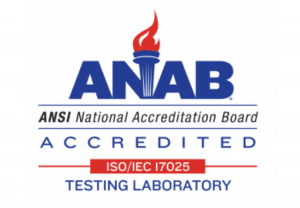Testing Standard:
ASTM D685 Practice for Conditioning Paper and Paper Products
Standard Number
ASTM D685
Standard Title
Practice for Conditioning Paper and Paper Products
Overview for ASTM D685:
ASTM D685 is a test method applied by setting up a standard atmosphere that all paper and paper products are conditioned to prior to testing. The purpose of conditioning is to establish a standard moisture content, temperature, and humidity level that allows for consistent and accurate testing of paper properties, such as strength, absorbency, and printability. Conditioning typically involves placing paper samples in a controlled environment for a specified period of time until they reach equilibrium with the surrounding air. The standard conditions for conditioning may vary depending on the specific test method and the type of paper being tested. Purple Diamond Testing offers ASTM D685 Testing as part of our packaging compliance and validation services.
Rationale for ASTM D685:
ASTM D685 – Standard Practice for Conditioning Paper and Paper Products. This practice is essential for consistency in test results when evaluating materials regardless of location or timing. The humidity of paper directly affects the physical performance. By conditioning paper to the standard atmospheric conditions, consistent, repeatable test results can be obtained.
Paper products are known to be hygroscopic (able to absorb and release moisture) and their properties can change significantly depending on their moisture content. Therefore, it is essential to take into account the effect of humidity on the paper before conducting any tests to obtain reliable and accurate results.
ASTM D685 specifies the temperature (23 ± 1°C) and relative humidity (50 ± 2%) that paper samples should be conditioned at for at least 4 hours, but preferably for 24 hours, before testing. This allows the sample to reach a moisture equilibrium with the surrounding environment, leading to consistent and reproducible test results.
Overall, using ASTM D685 paper conditioning ensures that paper samples are tested under controlled conditions, eliminating the effect of environmental factors that could skew the results of the tests.
For this test method, there is a pre-conditioning requirement. This is important because the physical properties of a sample at 50% relative humidity depend upon whether the sample is brought to 50% from a higher or lower relative humidity. Purple Diamond has a whole resource center for conditioning. The conditioning and testing atmospheres are important because both temperature and humidity have significant effects on the physical properties of paper and board.
1. Start by selecting a reliable and accurate temperature and humidity-controlled testing environment. Ensure that the location is equipped with a thermometer and hygrometer to monitor the temperature and humidity levels within the testing environment.
2. The testing environment must be maintained at a temperature of 23°C and a relative humidity of 50 percent.
3. Next, cut out sufficient pieces of ASTM D685 paper and place them in the testing environment on a flat surface.
4. Allow the paper to condition for at least 24 hours to allow it to equilibrate with the temperature and humidity in the testing environment.
5. After 24 hours, remove the paper from the testing environment and store it in a sealed container to prevent moisture from entering and altering the material properties.
6. Use the conditioned paper to perform the required tests following the ASTM D685 standard protocols.
7. Record the test results and analyze them with respect to the required standards to determine if the paper meets the desired quality specifications.
This standard is for lack of a better word, technically, identical to TAPPI T402. The method is applied to define the standard conditioning, normal preconditioning, conditioning, and testing of paper and paper products, paperboard, fiberboard, and containers made from those sorts of products.
Key Points:
- Optimize costs by mitigating damages accrued through transit
- Validates material selection during box design
- Verifies the physical performance of materials used to withstand conditions like humidity
- Yields consistent test results
Related Standards:
- TAPPI T402 – Standard Conditioning and Testing Atmospheres for Paper, Board, Pulp Handsheets, and Related Products
At Purple Diamond, we offer a free consultation or a guided tour of our facilities. Consultations can be done over the phone or on zoom, so choose what suits you best. To get in touch, go to our Contact Us page and fill out the form or book an appointment using the calendar below. Our goal is to assist you in any way possible, so please don’t hesitate to contact us. Thank you so much for reading down this far and thank you for considering Purple Diamond as your dedicated testing, engineering, and design facility for all of your packaging needs.
Related Testing Standards
- ASTM D642
- ASTM D685
- ASTM D880
- ASTM D951
- ASTM D999
- ASTM D3078
- ASTM D3103
- ASTM D3285
- ASTM D4169
- ASTM D4332
- ASTM D4728
- ASTM D5265
- ASTM D5276
- ASTM D5277
- ASTM D5487
- ASTM D6055
- ASTM D6179
- ASTM D6344
- ASTM D6653
- ASTM D7386
- ASTM F88
- ASTM F1140
- ASTM F1886
- ASTM F1929
- ASTM F1980
- ASTM F2096
- ASTM F2250
- ASTM F3039
- ASTM D1596
Contact Us
Accreditations
Affiliations








